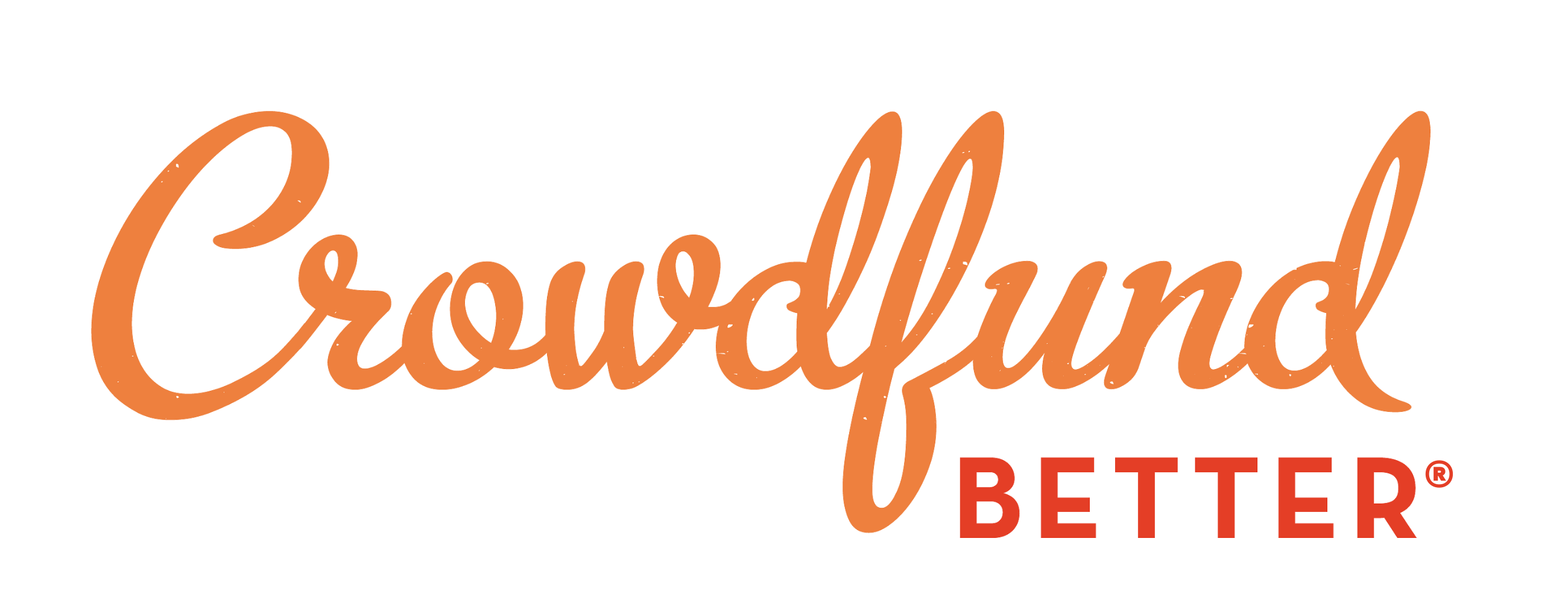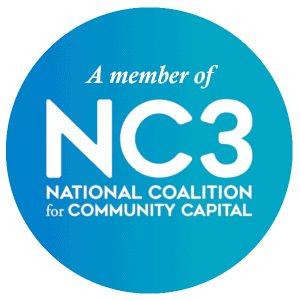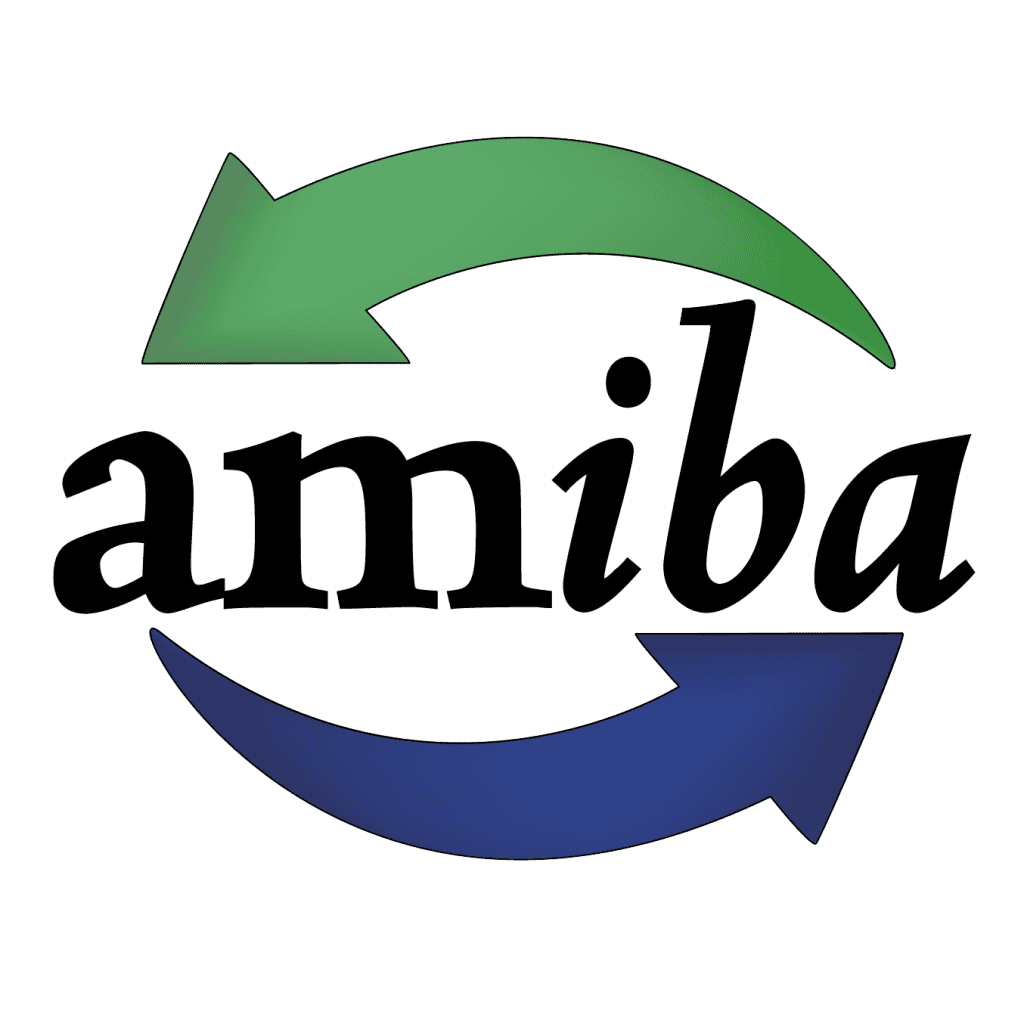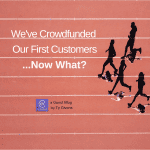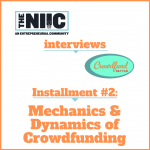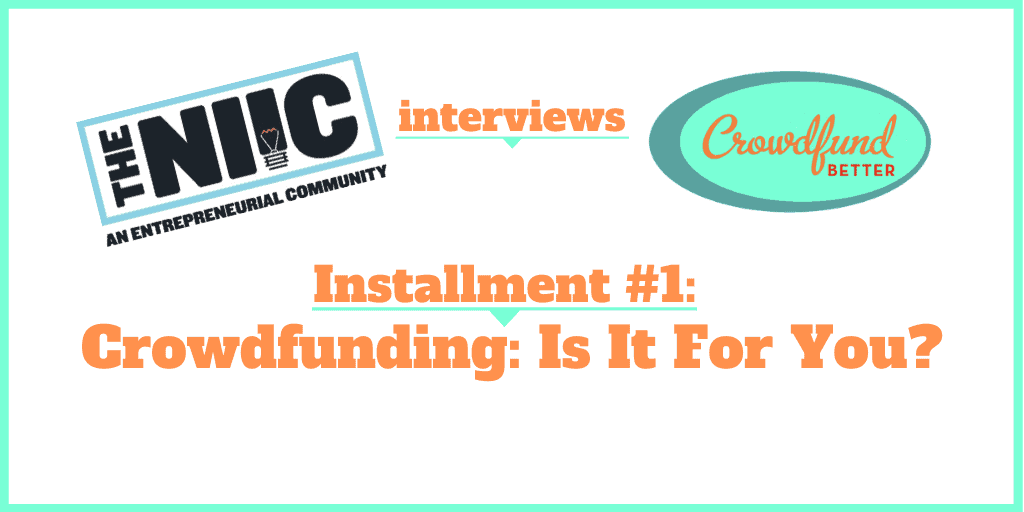
(Originally posted on The NIIC blog March 31, 2020)
I (Karl R. LaPan) heard a sobering statistic today, 1:72 ventures applying for funding from the Techcoast Angels (this is pre-COVID19) was successful. UNH Center for Venture Research says, on average, 15% of early-stage companies that are brought to the attention of investors result in an investment.
So, for the next three weeks, (Karl) is going to have a Q&A conversation with an industry expert to shine a light on an alternative method of raising outside capital – crowdfunding. He will be joined by Kathleen Minogue, Founder & CEO of Crowdfund Better to put this misunderstood investment approach in perspective and to peel back the onion on investment strategies for early-stage ventures. While you consider all the economic stimulus approaches and funding mechanisms, it may also be an optimal time to consider crowdfunding.
Definitions:
Crowdfunding is a large number of people sharing small amounts of their social, creative and financial capital via the internet within a limited time window.
OR
Crowdfunding is old-fashioned barn raising using new digital tools.
Karl: When does it make sense for a micro-enterprise to use crowdfunding as a platform for access to funding?
Kathleen: It makes sense for micro-businesses to be thinking about crowdfunding from Day 1 – long before they need funding. People often focus on the “funding” in crowdfunding, but you can also gather a number of non-financial benefits through the crowdfunding process that will help your business generate revenue in the future and make your business more resilient.
For example, crowdfunding can help you get proof of concept and market validation for your business idea while acquiring customers, testing pricing and getting customer feedback.
Crowdfunding is also a way to market your business and acquire funding simultaneously. You can use the same marketing dollars you would be using to help people discover your business to raise capital via crowdfunding.
Karl: What are the 3-4 most important critical success factors in launching a successful campaign?
Kathleen:
- Story – A specific project with a compelling story and a clear call to action
- Relationships – Crowdfunding success depends on the width and depth of your networks. These networks can be those you have built personally or a network of engaged community members around your business.
- Communication Channels – You can build a beautiful campaign page, but if no one sees it, it won’t raise a penny. Identify which online and offline channels are best to communicate with potential backers.
- Consistency – People are busy so you will need to reach out multiple times to encourage them to take action. Have systems in place to support consistent communication with your network.
Karl: I was struck by the 2017 PWC Women Unbound Study that women are better at crowdfunding than men? Why is this so?
Kathleen: A study out of UC Berkeley and Northwestern University found that language was one reason why women see greater success at crowdfunding than men. The researchers found that women tend to use more relational and less transactional language than men do when they crowdfund.
Women’s crowdfunding stories are also more compelling because they use language that is more inclusive. They focus less on the money and more on connecting with others who have an affinity for what they do. As I mentioned earlier, the ability to tell your story in a way that makes people feel connected with your business is integral to crowdfunding success.
Karl: What are the biggest benefits of crowdfunding over more traditional private equity funding options for a young, early stage venture?
Kathleen: When you raise money privately, the upside is that you also benefit from the perspective of a handful of experienced investors, but statistically, only a small number of companies are funded by these investors.
What if you could reach out to a much wider group of financial supporters to raise the capital you need? Instead of looking to one person to invest $10,000, you could try raising that same $10,000 from 100 people contributing $100 each.
In 2019, less than 3% of venture capital went to women and less than 1% went to people of color. In crowdfunding, your potential backers represent the actual demographics of the market for goods and services. This opens the door to funding for a greater diversity of entrepreneurial ideas.
Editor’s Note: Crowdfund Better is actively working to solve the issues around crowdfunding education for all. We’ve developed The Crowdfunding Opportunity online course to help you navigate the crowdfunding ecosystem to fund your business.
